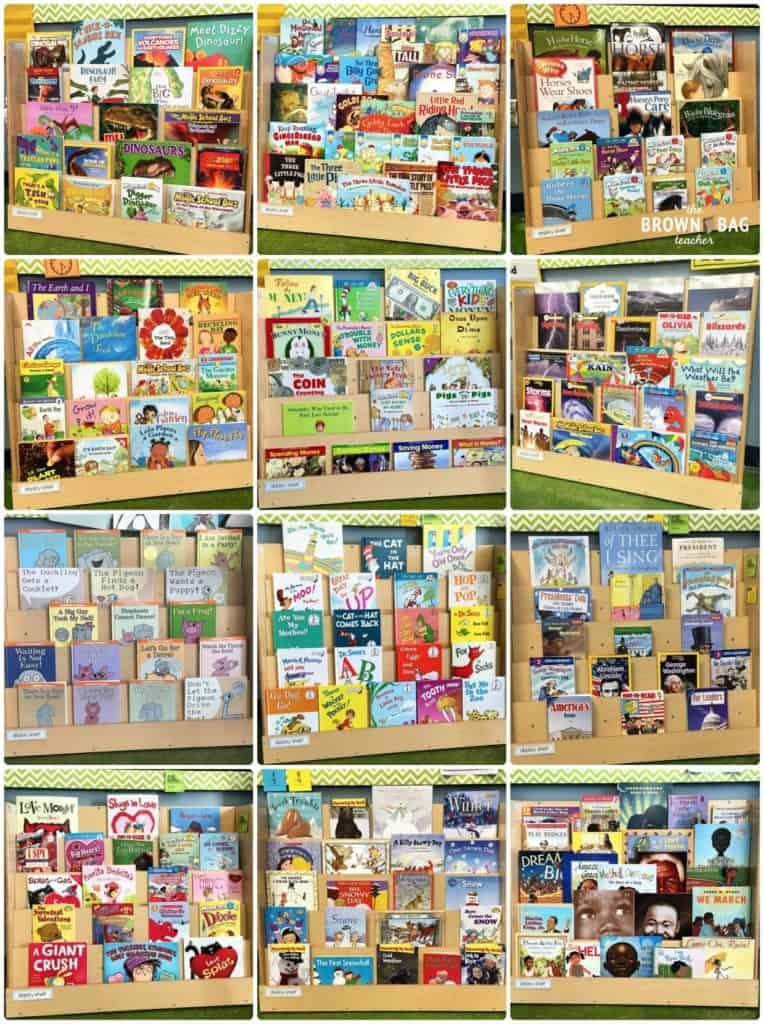Classroom organization is a topic that can be discussed endlessly. For many educators, a well-organized classroom is not just about aesthetics; it’s about creating an environment that maximizes learning and streamlines teaching. This guide offers tips and tricks to enhance classroom organization, particularly focusing on guided reading level resources.
Organizing Reading Material: A Foundation for Literacy
Library Display Books: Showcasing Reading Treasures
A well-organized classroom library is a cornerstone of reading success. Utilize a wooden display shelf to showcase featured books and create excitement around reading. Student book bins, such as those from Really Good Stuff, provide accessible storage for individual reading materials. Sterelite containers can be used to organize books by theme, creating visually appealing and easily navigable collections. Consider creating weekly themed bookshelves to expose students to a variety of books and authors.
Label student book bins with numbers using editable classroom organization labels and attach them with permanent Glue Dots. This ensures each student knows where to find their reading materials and promotes a sense of ownership.
Leveled Readers and “Listen to Reading” Resources
Large metal cabinets can house leveled readers and “Listen to Reading” books. Organize leveled readers, such as those from Reading Street, on shelves for easy access. Place “Listen to Reading” books in plastic bags if multiple copies are available. Sort these books into categories like fall, spring, and anytime books to simplify the process of rotating materials in a listening center. (Learn more about setting up a Listen to Reading center here.)
For “Listen to Reading” books, use Glue Dots to attach the CD case and CD to the inside cover of the book. This ensures that the audio component is always readily available, even if the audio files are also stored digitally.
Weekly Magazines and Newspapers: Non-Fiction Engagement
Designate a bin for “Weekly News” to store magazines and newspapers. Lamination can extend the lifespan of these materials, making them a valuable resource for years to come. Clip magazines together by month for easy access and organization.
Guided Reading Books: A Bag of Tricks for Differentiation
Guided reading is a cornerstone of effective literacy instruction. Dedicated storage for guided reading sets is crucial. Utilize plastic bins to organize books by guided reading level. Picture books can be stored in plastic bags on the back of a shelf, while chapter books can be placed on the bottom shelf. Attach a list of guided reading levels and corresponding book titles to the inside of the cabinet door to easily track available resources. This is essential for ensuring that you have the right A Bag Of Tricks Guided Reading Level materials on hand. (Explore strategies for running a successful Guided Reading block in this blog post.)
Supplies: Accessibility and Organization
Manipulative and Basic Supplies: Empowering Independence
Wall-mounted cubbies provide accessible storage for frequently used materials. Assign cubbies for Daily 5 and Guided Math resources. Clearly label each bin so students know what to grab and where to return materials. Establish a rule that anything with a label can be touched, while unlabeled items require permission.
Use a bead container from Michaels to store dice for math games and differentiating math centers during Guided Math.
Center/Choice Tubs: Streamlining Activities
Utilize Large Sterelite Clip Top Tubs for storing Math Center and Word Work materials. These tubs are durable, spacious enough to hold papers without folding, and feature secure lids. As students make their Daily 5 and Guided Math choices, they can easily grab the correct tub. (Learn more about organizing Math Centers here and Word Work here.)
Hang number lines from a Command Hook for easy access.
Planning: Teacher Efficiency
Teaching Materials: Preparation and Accessibility
Maximize the space behind and under your guided reading table for storage. A 10-drawer rolling cart can be used to store materials for each day of the week. Label each drawer with days of the week, as well as categories like “Copy,” “Laminate,” and “Extras.” Include a drawer for emergency sub plans for peace of mind.
Keep a black 3-drawer Sterilite container under each side of your teacher table. Use one container to store Guided Reading Materials, organizing them by colored groups. Store personal items in the other container.
Keep a tri-container of writing utensils on top of your desk.
Also, keep color-coded bins organized and stocked for Guided Math near your teacher table.
Conclusion
Classroom organization is fundamental to creating a productive and engaging learning environment. By implementing these tips and tricks, particularly those focused on a bag of tricks guided reading level, you can maximize learning and streamline your teaching practices. Remember to label items for independent student use, keep materials at an accessible height, and develop a color-coding system for easy management.
